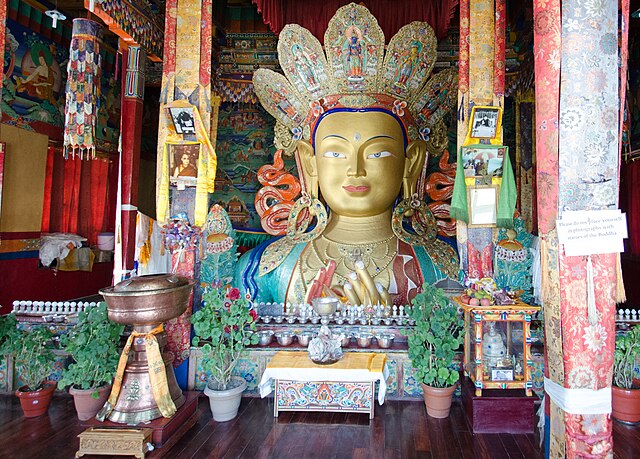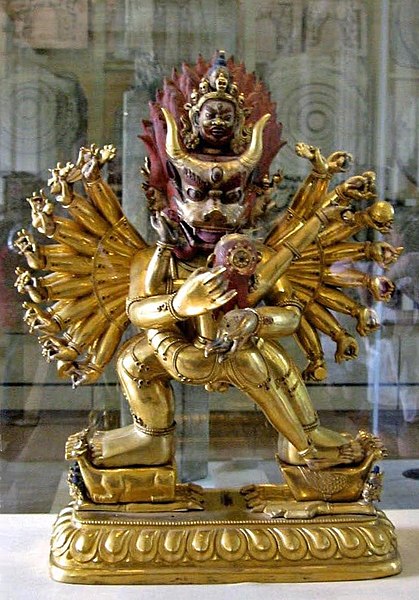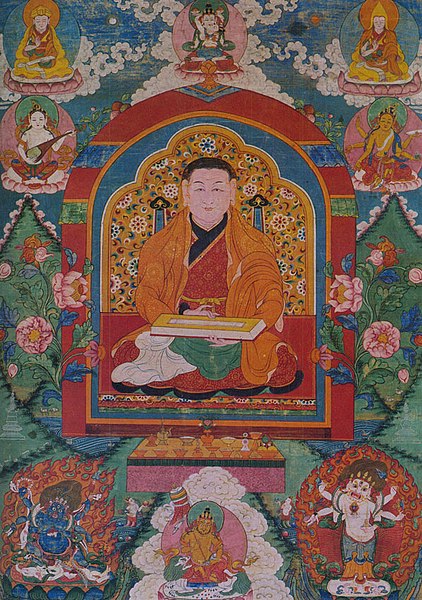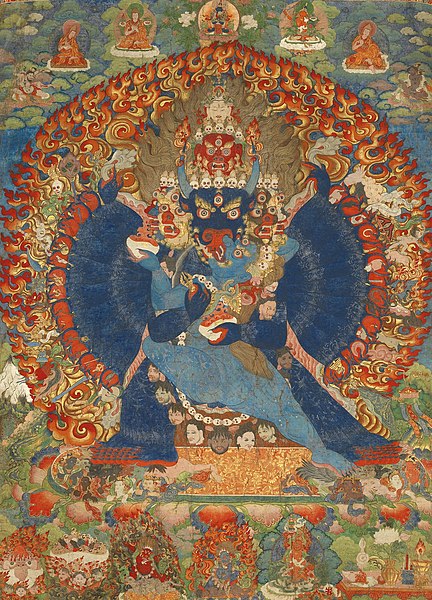The vast majority of surviving Tibetan art created before the mid-20th century is religious, with the main forms being thangka, paintings on cloth, mostly in a technique described as gouache or distemper, Tibetan Buddhist wall paintings, and small statues in bronze, or large ones in clay, stucco or wood. They were commissioned by religious establishments or by pious individuals for use within the practice of Tibetan Buddhism and were manufactured in large workshops by monks and lay artists, who are mostly unknown. Various types of religious objects, such as the phurba or ritual dagger, are finely made and lavishly decorated. Secular objects, in particular jewellery and textiles, were also made, with Chinese influences strong in the latter.
Large shrine statue of Maitreya, Thiksey Monastery, Ladakh, 1970
Thanka of Ashtamahabhaya Tara, late 12th century, gouache on cotton.
Yab-yum "bronze" with pigments and gilding
Self-portrait by the leading Mongolian monk Zanabazar (1635–1715)
A thangka is a Tibetan Buddhist painting on cotton, silk appliqué, usually depicting a Buddhist deity, scene, or mandala. Thangkas are traditionally kept unframed and rolled up when not on display, mounted on a textile backing somewhat in the style of Chinese scroll paintings, with a further silk cover on the front. So treated, thangkas can last a long time, but because of their delicate nature, they have to be kept in dry places where moisture will not affect the quality of the silk. Most thangkas are relatively small, comparable in size to a Western half-length portrait, but some are extremely large, several metres in each dimension; these were designed to be displayed, typically for very brief periods on a monastery wall, as part of religious festivals. Most thangkas were intended for personal meditation or instruction of monastic students. They often have elaborate compositions including many very small figures. A central deity is often surrounded by other identified figures in a symmetrical composition. Narrative scenes are less common, but do appear.

Buddha Vairocana, the “Resplendent One”. Pigments on cloth, 14th century
Thangka depicting Vajrabhairava, c. 1740
A large thangka hung on a special wall at Gyantse in Tibet in 1938
Thanka in making








